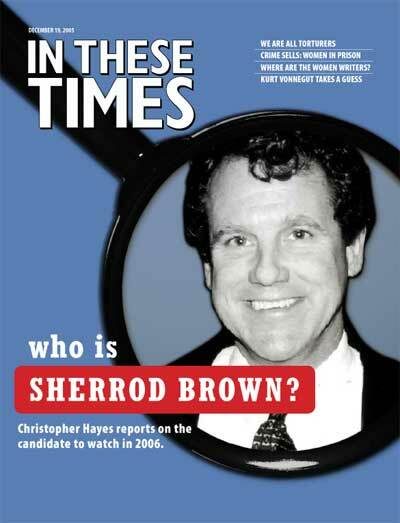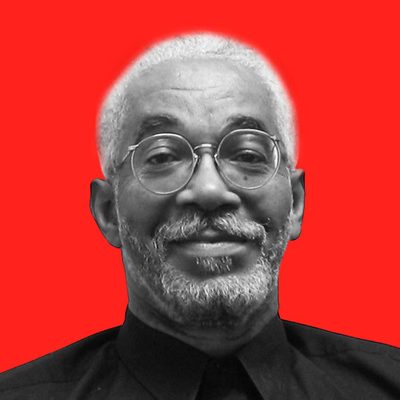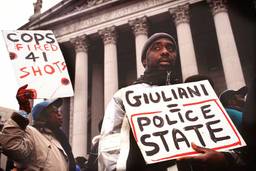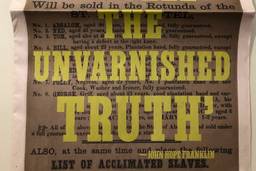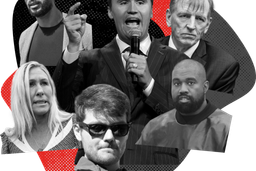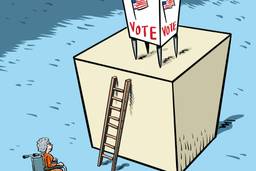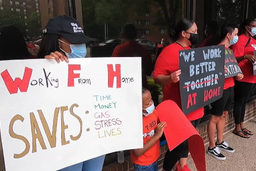Many participants returned from the Millions More Movement event in Washington D.C. convinced that the October 15 rally was a useful step in community mobilization and political organizing. Some enthusiasts even mark the event, which officially commemorated the 10th anniversary of the 1995 Million Man March, as a seminal step on the way to a new civil rights movement. Others have criticized it as just another feel-good display of speechifying and elite-marking or, a little more charitably, as a cathartic response to the Katrina disaster, but little else.
The Chicago Defender estimated that the crowd on the National Mall peaked at “more than 100,000 people,” while rally organizers publicly put the number at “more than a million.” One member of the organizing committee who requested anonymity said the crowd was 250,000, at best. But, he noted, the focus of the event will be on what happens after the participants go back home.
“This is more than a march, we’re building a movement,” hip-hop artist Wyclef Jean chanted to the crowd, reinforcing a theme repeated by speakers throughout the day. Organizers seemed especially attuned to the criticism of the 1995 march’s race and gender exclusivity, as well as its lack of programmatic focus and follow-through, designing it specifically to answer those criticisms. The event was open to women and men of all races and sexual orientation (although there was a dispute about organizers blocking a gay speaker). And a Movement mission statement included a list of specific agenda items – ending police brutality, racial profiling, the incarceration epidemic, and substandard education and healthcare, among other things. And speaker after speaker stressed the importance of serious follow-through.
“We have seen an unparalleled number of black leaders of organizations come together to speak to America and the world with one voice,” said Minister Louis Farrakhan, head of the Nation of Islam and the prime mover of both the Million Man March and the anniversary rally. “This has never happened before in the world. A new day is dawning in America, starting with our unity. This is more than a moment in time.”
And indeed there was a wide and unprecedented array of black leadership supporting the rally. The National Urban League joined the New Black Panther Party, the Progressive Baptist Convention and dozens of unlikely allies as co-sponsors. Economist and feminist Julianne Malveaux joined Black Nationalist ideologue and Kwanzaa creator Maulana Karenga and musician/activist Harry Belafonte in addressing the crowd. The rally managed to unite strains of the black freedom movement that have long been at odds.
Most participants agreed they were impelled by a sense of crisis. “That rally, quite simply, was an urgent call to action,” said Conrad Worrill, chair of the National Black United Front. “As a people, we are more damaged today than ever before in our history and we need a movement to repair the damage.”
The confluence of events – from the disastrous aftermath of Katrina, to the naked colonialism of the Iraq occupation, to the bulging population of black inmates within the prison industrial complex and the growing menace of police brutality – certainly has stoked a new sense of crisis within black America. Many speakers used the aftermath of Katrina to highlight the racial disparities that continue to plague the nation. In fact, the first order of business on the Movement’s agenda is an emergency fund for Katrina victims.
Although this gathering differed from the original in both its intra- and interracial outreach, the turnout was appreciably lower. Organizers pitched the event as racially inclusive, but there were few non-blacks in the audience and hardly any among the speakers. De-emphasizing the event’s racial focus failed to attract non-blacks but also seemed to dampen the black attendance. This paradox besets progressive organizers as they seek to enlist people of all races in a new movement against the ascendant right wing.
In this respect, Farrakhan represents a thorny problem. He is widely respected in the black community, and his charisma and intelligence mark him as a media-genic spokesman for many progressive causes. His analysis of U.S. foreign policy differs little from the standard left critique. He is on target with his assessment of the neo-conservative clique and its policy objectives. His ecumenical and interracial outreach has forged alliances between disparate groups.
But his separatist prescriptions – in his speech, he advocated separate ministries for black people – and his overweening religiosity make many progressives wince. What’s more, traces of authoritarianism, racism and homophobia pepper his history.
His paternity hovers over the Millions More Movement, just as it did the Million Man March. And it adds another level of difficulty to the question of whether black Americans can jump-start a movement simply by willing it into existence.

I hope you found this article important. Before you leave, I want to ask you to consider supporting our work with a donation. In These Times needs readers like you to help sustain our mission. We don’t depend on—or want—corporate advertising or deep-pocketed billionaires to fund our journalism. We’re supported by you, the reader, so we can focus on covering the issues that matter most to the progressive movement without fear or compromise.
Our work isn’t hidden behind a paywall because of people like you who support our journalism. We want to keep it that way. If you value the work we do and the movements we cover, please consider donating to In These Times.
Salim Muwakkil is a senior editor of In These Times and host of “The Salim Muwakkil Show” on radio station WVON-AM in Chicago. Muwakkil was also contributing columnist for both the Chicago Sun-Times (1993 – 1997) and the Chicago Tribune (1998 – 2005). He is also a co-founder of Pacifica News’ network daily “Democracy Now” program and served as an adjunct professor at Northwestern University, University of Illinois, the Art Institute of Chicago and Chicago’s Columbia College.
